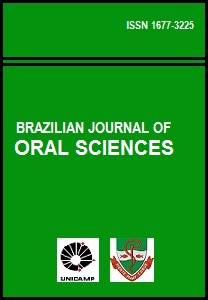Abstract
Aim: The purpose of this study was eval Aim: uate the occurrence of displacement on the apical and cervical thirds of artificial curved root canals with 30° of curvature, comparing the use of stainless steel hand and oscillatory files with nickel-titanium (NI-TI) hand, rotary and oscillatory files. Methods: Methods: Seventy artificial curved root Methods: canals were divided into 7 groups (n=10). All canals were prepared with sizes 15 to 40 instruments at the working length according to a crown-down technique. The amount of material removed in the curved portion of the simulated canals at 2 mm level outside and 11 mm inside was measured. Data were analyzed statistically by ANOVA and Tukey’s test (p<0.05). Results: Results: There was statistically significant Results: differences (p<0.05) at 2 mm level between NI-TI and steel stainless groups. At 11 mm, statistically significant differences (p<0.05) were observed between the groups that used rotary systems (5 and 6) and the remaining groups. Conclusions: Conclusions: The most centered preparations were those belonging to groups 5 and 6, at both levels. Root canal preparation with NI-TI files yielded better results than the stainless steel files especially when mechanically activated.The Brazilian Journal of Oral Sciences uses the Creative Commons license (CC), thus preserving the integrity of the articles in an open access environment.
Downloads
Download data is not yet available.

